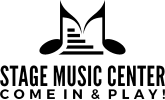How Music Evokes Picture and Story
Many writers and actors I know make ‘mix tapes’ of songs that help inspire their writing, or create a backstory or inform personality traits for a character. Music can create a mood or capture a memory. When you hear a song that was popular when you were in high school, what kind of memories does that evoke? Do you know what you wore, what places you frequented, who were your friends? Many couples connect with a song that they heard early in their relationship which brings back all those sweet feelings associated with the first blush of love.
Just as Proust’s recall of a delicate Madeleine cookie created an idea, then an entire volume of past remembrances, a song can do the same.
Music tells a story, whether it is accompanied by lyrics or not.
Think of some of your favorite films. Most likely there was also a song in it that resonated with you. Many songs used in movies have become iconic. A wistful rendition of ‘Moon River’ sung by an emotionally fragile Audrey Hepburn as the iconic Holly Go Lightly in Breakfast at Tiffany’s. Pharrell Williams irresistibly danceable ‘Happy’ from Despicable Me 2. The swagger of John Travolta as he strode down the streets of Brooklyn, paint cans in hand swaying to the beat of the Bee Gee’s ‘Stayin’ Alive’ from Saturday Night Fever. Theme music from Jaws, The Godfather and Rocky can instill anxiety, dread or exuberant inspiration.
Listening to a favorite song can evoke fond memories and enhance our mood.
Images – watercolors, oil paintings, posters, videos intensify our emotional response to music, and expand the storytelling potential of songs. Music can heighten our emotional reaction to images, and intensify our understanding of visuals.
Think about a music video. It can provide visual meaning to a song’s story, or create a completely unexpected narrative that the songwriter may have never imagined. Video artist and motion graphics designer Scott Pagano has created music videos and concert graphics for many contemporary musicians and bands including Skrillex, Zedd, The M Machine, Dyro, Flying Lotus, Wolfgang Gartner, and BT. His unique perspective on how images and sound come together starts with inspiration, which he says is the ‘overlap and intersection of synthetic and natural forms. His love of cinema encourages ‘strong cinematographic, compositional and color palette cues from that world. Architectural forms also play a large role in his work. He describes his process this way:
“The first thing is to immerse myself in the song by listening to it over and over and over. There are often visual ideas that I have been wanting to explore that influence the overall direction I take – but it is critical to let the song reveal itself visually. It is akin to a changing state of matter. Melting the ice that is the song to become the mist that is the image. I listen, eyes closed, and imagine a world of forms, actions, and colors.”
It’s said music, like cinema is a universal language. We are all touched by certain songs or types of music in ways we can’t always explain. Put on the wrong type of music at the wrong time, and that can be a buzzkill. Death metal for a lullaby, klezmer music for a romantic dinner for two, classical at frat party: all will be out of place, and most likely unwanted.
Listening to music is common, often essential in our daily lives. The way music makes a listener feel is a key factor in determining his or her enjoyment of the music.
Music videos blend narrative with song, often with one informing and enhancing the other.
Here are a few explanations to uncover our emotional reactions to music.
-Music mostly makes us feel good. Positive feelings often broaden our mindset in ways that are beneficial to health and creative thinking. Hence, music is good for our mental health.
- Our internal rhythms, like heart rate, speed up or slow down to become one with the music. We float and move with the music. Being in sync with music is a source of pleasure. A soothing lullaby can calm infants and help them fall asleep to the point their breathing rhythm becomes synchronized with their musical rhythm.
- We often “catch” the emotions of others when perceiving their emotional expressions. This process helps us understand other people’s feelings and can explain the euphoria that travels through a crowd during a concert.
- Emotional events. Many of our musical preferences reflect our individual history. For example, some people may have a fond memory associated with Elgar's "Pomp and Circumstance" for graduation ceremonies or Pachelbel’s “Canon in D Major" for a wedding. People do not forget these emotional events. When the memory is stoked, so are the emotions associated with it. Thus, we become nostalgic.
- Musical surprise. Tour brains often make predictions based on our past experiences. When we experience something novel, or when something unexpected happens, we often exhibit a strong emotional response. For example, a listener may expect a dissonant chord to resolve into a consonant one. But this may be delayed by a creative composer to enhance emotional excitement.
We often experience deep emotions when we view art or read a book. Music even works more rapidly and intensely on the brain than any other art, because it requires so little conscious reflection.
Rod Stewart once sang ‘Every Picture Tells A Story.’ Most often than not, so does the music that moves us.
For further reading, check out Smithsonian Magazine to see how our brains process music.
Related Posts:
Music and Arts: Painting From Music


